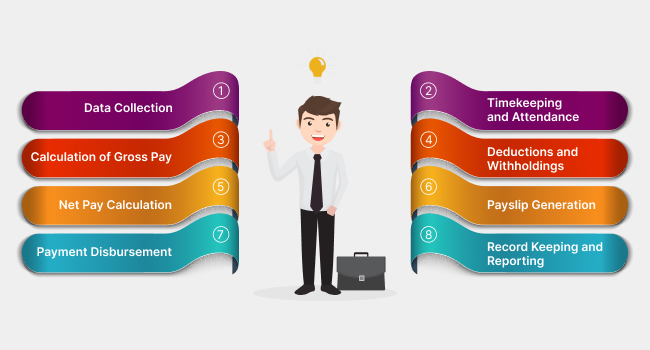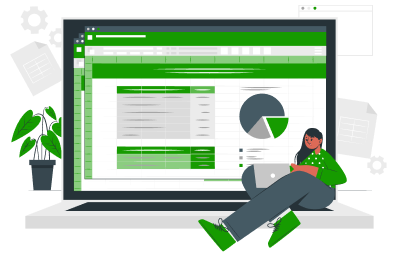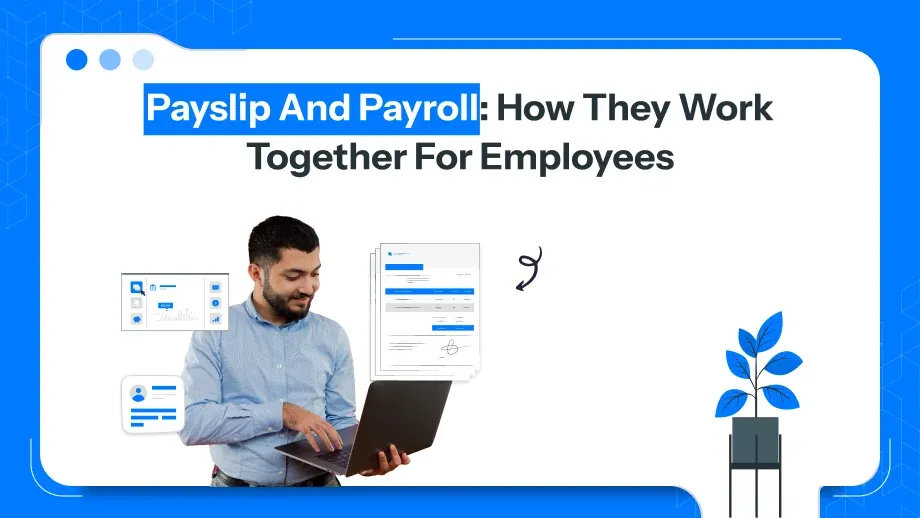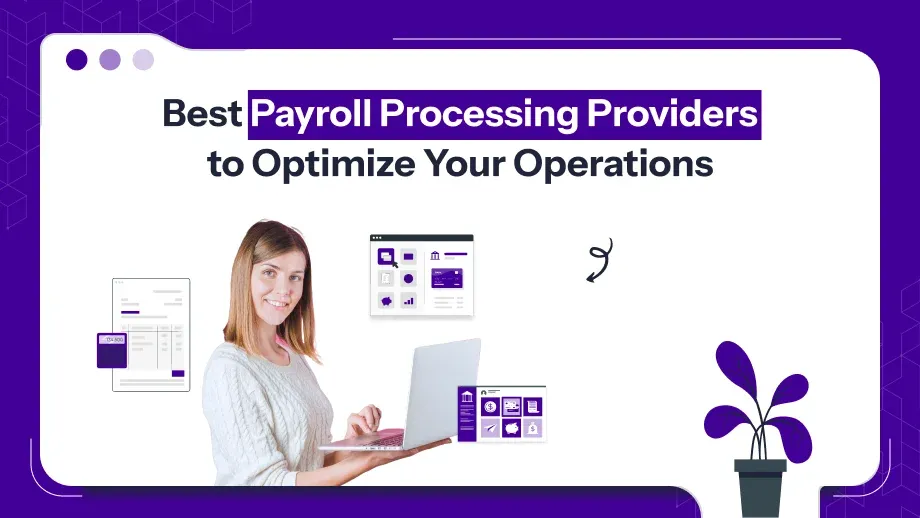Grab a chance to avail 6 Months of Performance Module for FREE
Book a free demo session & learn more about it!
-
Will customized solution for your needs
-
Empowering users with user-friendly features
-
Driving success across diverse industries, everywhere.
Grab a chance to avail 6 Months of Performance Module for FREE
Book a free demo session & learn more about it!
Superworks
Modern HR Workplace
Your Partner in the entire Employee Life Cycle
From recruitment to retirement manage every stage of employee lifecycle with ease.


Seamless onboarding & offboarding
Automated compliance & payroll
Track performance & engagement
Maximizing Productivity: The Role of a Payroll Management System in Modern Businesses
- payroll software for small business
- 10 min read
- June 19, 2023
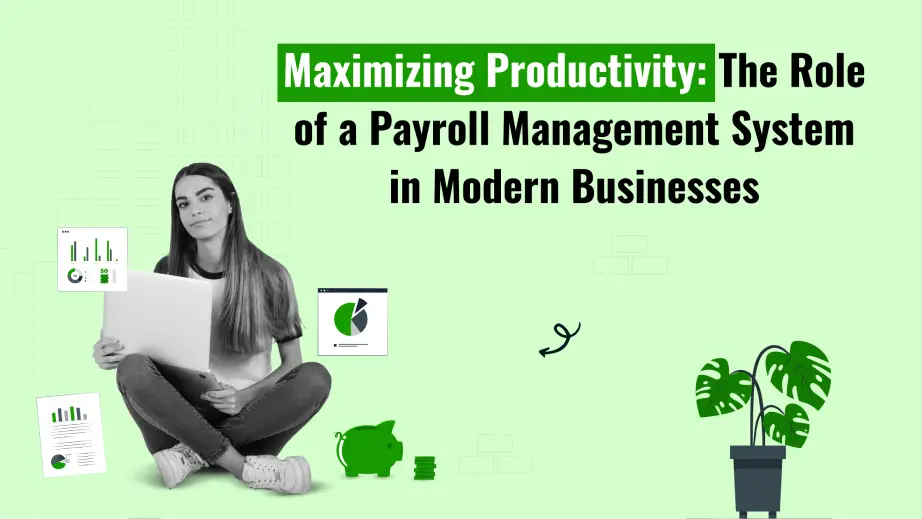
Hey there, business enthusiasts and productivity seekers! Are you ready to explore the world of boosting productivity in today’s modern businesses? Well, you’re in for a treat! Welcome to our new blog where we’ll uncover the role of a Payroll Management System in helping businesses work smarter and achieve more.
Imagine a workplace where everything runs smoothly, tasks get done efficiently, and everyone’s time is respected. Sounds amazing, right? In our digital age, where technology plays a vital role, one tool stands out as a game-changer – Payroll Software. It’s a powerful tool that has transformed how businesses handle their finances, taking productivity to a whole new level.
Join us on this exciting journey as we explore the incredible benefits of a Payroll Management System. We’ll show you how it saves time, simplifies processes, and frees businesses from the burden of tedious administrative tasks.
Whether you’re a new entrepreneur looking to simplify payroll or an experienced pro seeking ways to boost productivity, we will provide valuable insights, practical tips, and inspiring success stories. It’s your ticket to unlocking the full potential of your business.
So, get ready for an adventure filled with easy-to-understand information, helpful advice, and real-life examples. We’re here to guide you on your path to maximizing productivity. Stay tuned for more knowledge, where we’ll reveal the fantastic ways a Payroll Management System can revolutionize your business and help you achieve more.
What is Payroll Management System?
If you don’t know about payroll management software, then let’s break it down in simple terms.
A Payroll Management System is a digital solution designed to handle all aspects of employee compensation and financial records within a business. It acts as a central hub where businesses can efficiently manage payroll processes, including
- Calculating salaries
- Deducting taxes and other deductions
- Generating payslips
- Ensuring compliance with legal requirements
Gone are the days of cumbersome spreadsheets and manual calculations. With Payroll management software, businesses can bid farewell to time-consuming and error-prone payroll tasks. The intuitive payroll software automates repetitive processes, streamlines data management, and ensures accuracy, saving valuable time and resources.
Moreover, robust payroll software keeps track of employee attendance, leave balances, and other relevant information, providing a comprehensive overview of each employee’s compensation history. It simplifies the entire payroll cycle, from onboarding new employees to generating year-end reports and tax forms.
But it doesn’t stop there! Modern software often comes equipped with additional features, such as integration with time best expense tracking app india, employee self-service portals, and advanced analytics. These extras empower businesses to make data-driven decisions, enhance employee engagement, and gain valuable insights into their financial health.
From increased productivity to improved compliance and beyond, you won’t want to miss it. Stay tuned as we uncover the secrets to transforming your payroll processes and revolutionizing your business!
What Are The Phases of The Payroll Management Process?
When it comes to managing payroll processing effectively, understanding the phases of the payroll management process is crucial.
Let’s take a closer look at the key stages involved:
1. Data Collection:
The first phase of the payroll management process involves gathering essential data. This is based on employee information such as names, addresses, tax withholding details, bank account information, and employment contracts.
Additionally, you need to collect data related to employee attendance, leaves, overtime, and any other factors that may impact payroll.
2. Timekeeping and Attendance:
Accurate timekeeping and attendance tracking play a vital role in calculating employee wages.
Before counting payroll it is necessary to consider leave and attendance management. This phase involves recording the hours worked by each employee, including regular hours, overtime, and any other relevant factors.
Time-tracking systems or employee management software or HRMS software can streamline this Process, ensuring precise calculations and reducing errors.
3. Calculation of Gross Pay:
Once the data is collected, checked attendance and leaves it’s time to calculate the actual payroll.
Yes, in that case, the step is to calculate gross pay. This involves multiplying the hours worked by the applicable wage rates, considering any overtime or shift differentials.
Additionally, it may involve factoring in other components such as bonus, commissions, or allowances.
4. Deductions and Withholdings:
After calculating gross pay, it’s time to deduct taxes, social security contributions, and other withholdings as per legal requirements.
This phase ensures that the correct amounts are deducted from each employee’s earnings. Deductions may also include retirement plan contributions, health insurance premiums, or other voluntary deductions chosen by the employee.
5. Net Pay Calculation:
Net pay refers to the final amount that employees will receive in their bank accounts after all deductions are taken into consideration.
Once all deductions and withholdings have been accounted for, the net pay is calculated. It is the actual amount employees take home as their wages.
6. Payslip Generation:
The next phase involves generating payslips for each employee. Payslips provide a detailed breakdown of earnings, deductions, taxes, and net pay.
They serve as essential documents for employees, ensuring transparency and facilitating financial management.
7. Payment Disbursement:
After generating payslips, it’s time to disburse payments to employees. This can be done through various methods such as direct deposit into employees’ bank accounts, issuing physical checks, or utilizing digital payment platforms.
Timely and accurate payment disbursement is crucial to maintain employee satisfaction and trust.
8. Record Keeping and Reporting:
The final phase of the payroll management process involves maintaining proper records and generating reports. Accurate record-keeping ensures compliance with legal and regulatory requirements.
It also provides a historical reference for audits, tax filings, and financial analysis. Reporting capabilities within payroll management software enable businesses to extract valuable insights and monitor payroll solution trends over time.
By understanding and efficiently managing each phase of the payroll management process, businesses can ensure accurate and timely payments, maintain compliance, and minimize errors.
Implementing robust Payroll management just like Super Payroll is now a boon!
Because it streamlines payroll phases, reduces administrative burdens, and enhances overall productivity. Stay tuned for blog completion, where we’ll explore more aspects of payroll management and how to optimize each phase for maximum efficiency for modern businesses!
Read More: Payroll 2.0: Next Gen Payroll Software for Small Business

Save time, reduce errors & focus on what matters with- payroll automation!
Take the next step towards simplifying payroll management, ensuring compliance, and enhancing employee satisfaction. Explore the benefits and features of Super Payroll!
Click the below button to get the free demo & trial of payroll software.
How Does HR & Payroll Software Work?
HR and Payroll software is a comprehensive solution that combines Human Resources Management and Payroll management into a single, integrated system. There are multiple functions that they can handle easily.
HR and payroll management system are not only for collecting data and just managing the payroll calculations.
- It simplifies data collection by providing a centralized database.
- It provides an employee self-service portal where employees can see their personal details, tax withholding information, and employment contracts.
- It also streamlines timekeeping and attendance tracking, integrating with time-tracking systems.
- It offers built-in features to accurately record employee working hours, including regular hours, overtime, and other factors.
- Moreover, the payroll management system automates overtime calculation for gross pay, taking into account wage rates, hours worked, and additional components.
- It further simplifies the process by automatically deducting taxes, retirement plan contributions, etc as required by regulations.
- Payroll software calculates the net pay, and the final amount employees receive, and generates detailed payslips electronically.
- Then, the payroll software facilitates payment disbursement through options such as direct deposit, physical cheques, or digital payment platforms.
- It generates reports that offer insights into labor costs, budget allocations, and payroll trends.
The payroll software ensures timely and accurate payment distribution, enhancing employee satisfaction. The payroll software also maintains comprehensive records of employee information, payroll history, attendance, and leave balances, enabling easy access to data and ensuring compliance with audit and regulatory requirements.
Also, See: Payroll Outsourcing Service and Payroll Software- What to Pick!
How Does Payroll Software Help Modern Businesses?
Modern businesses have modern problems and need modern solutions. Right? Payroll is one of kind problem that can be solved by the cloud-based payroll management system.
Every small startup entrepreneur wanted to save their resources in terms of effort, time & cost, what if they found a problem managing some major functions of the business like payroll?
Payroll software can be the savior for every small business owner. As Payroll management software provides numerous benefits to modern businesses, helping them overcome the challenges associated with managing payroll processes.
First and foremost, this software saves valuable time and effort. Gone are the days of manual calculations, endless paperwork, and time-consuming administrative tasks.
With the payroll system, businesses can automate the entire payroll process, from collecting employee data to calculating wages, generating payslips, and disbursing payments.
Payroll automation eliminates the need for manual intervention, reducing errors and freeing up time for HR professionals and business owners to focus on strategic initiatives that drive business growth. By outsourcing payroll, companies can further enhance efficiency and accuracy, ensuring compliance with regulations while allowing internal teams to concentrate on core business activities.
Payroll software ensures accuracy and compliance. Payroll regulations, tax laws, and labor policies are constantly evolving, making it challenging for businesses to stay up to date. However, payroll software is designed to stay current with these regulations and automatically apply the necessary calculations and deductions. This significantly reduces the risk of errors and non-compliance, protecting businesses from costly penalties and legal issues.
Payroll software generates accurate and detailed reports that assist in audits, tax filings, and financial analysis, providing businesses with a clear overview of their payroll activities.
Another advantage of payroll software is its ability to enhance employee satisfaction. Timely and accurate payroll processing plays a significant role in maintaining employee morale and trust. Payroll software ensures that employees are paid correctly and on time, with payslips readily accessible for your transparency.
Additionally, some cloud-based payroll management software may offer Employee self-service portal, allowing individuals to access their own payroll information, check time and leaves, and make updates. This self-service functionality empowers employees and reduces the administrative burden on HR departments, ultimately leading to a more engaged and satisfied workforce.
How You Can Solve Your Payroll Problems?
It was not at easy as nowadays! There is a SaaS– cloud-based software that can handle the whole payroll system.
So, if you are searching for the best payroll system for payroll operations, then Super Payroll from Superworks is one of the best solutions you can take. We are the ones who can stand up for your business payroll problems and make the payroll process more seamless.
Are you ready to cut the crepe and ready to increase the efficiency of HR and the productivity of employees? – We got your cover back!
Also see: hr and payroll service | payroll software online | payroll tools free
